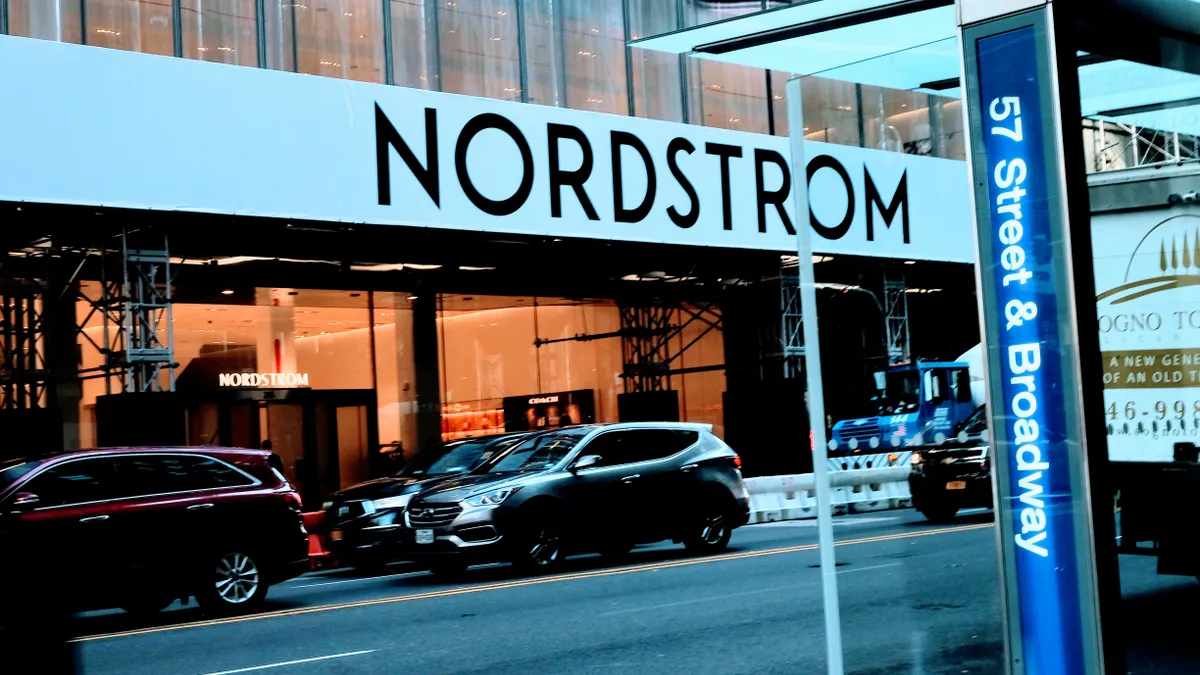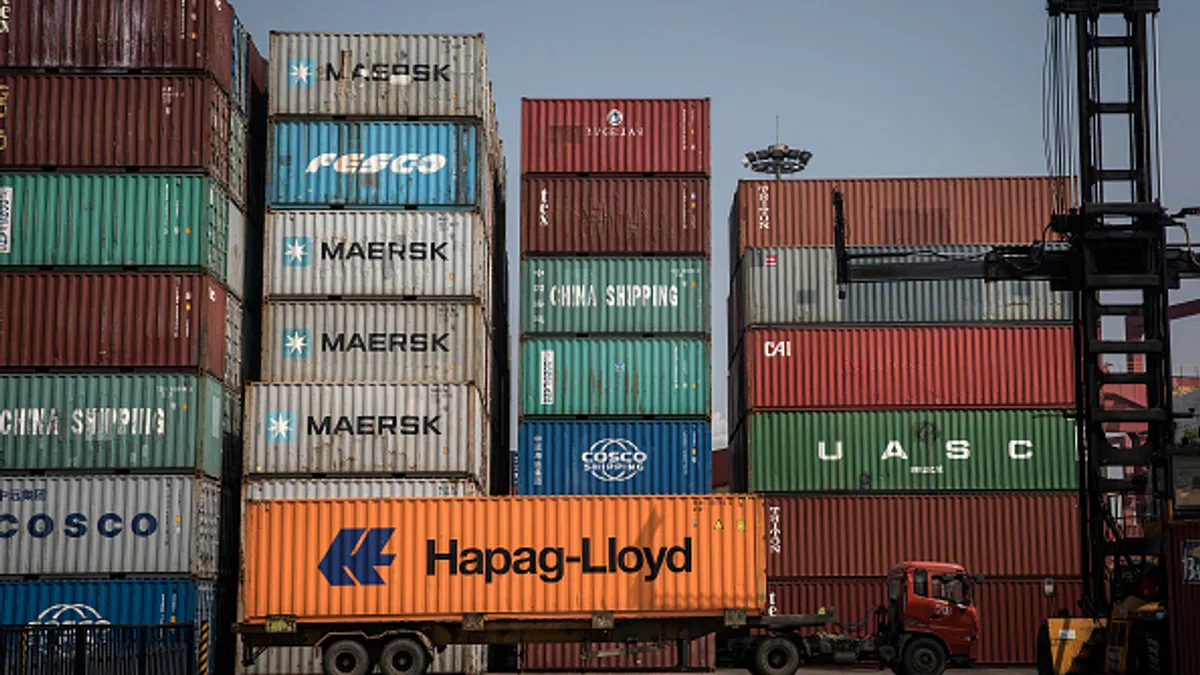NEW YORK — With the opening of a gleaming new seven-story full-line store — one floor for each year of planning — on the West Side of New York on Thursday, Seattle-based Nordstrom is moving on up.
"We're in the top 50 markets," Co-president Erik Nordstrom told analysts at a management meeting at the New York Stock Exchange on Tuesday, where executives said New York represents a $700 million-plus market. "New York has been the big hole."
Getting a store into the Big Apple has long been a dream of the Nordstrom family. Co-presidents Erik and Pete Nordstrom, during pre-opening events this week, more than once gave their father, Bruce, who was there, a "can you believe it?" shout-out. In the city, the company already runs six off-price Rack stores (two in Manhattan), a men's store opened last year, and two recently opened merchandise-free Local stores. The company also operates other full-line and off-price stores in the wider Tri-State area.
"Dad first contemplated New York City when he was 35," Erik Nordstrom told a press gathering on Monday. "He's now 86."
The store, which took more than $500 million of investment capital to complete, sits across from the new men's store on 57th Street, on the opposite side of Central Park from luxury department store icons Bergdorf Goodman, Barneys and Saks.
"We didn't come to out-Bergdorf Bergdorf's or out-Saks Saks," Pete Nordstrom told analysts Tuesday, declining to describe specifics of the company's marketing strategy. "We're going to get a lot of eyeballs on our space because of our location."
But that reasoning could fall flat, according to Columbia University Business School retail studies professor Mark Cohen, who said that in earlier discussions with Pete Nordstrom, he learned the family was impressed with the statistic that annually there are 10 million unique visitors to Central Park, which is a block away.
"The view that Central Park has 10 million visitors a year is correct but it's highly misleading as a basis for footsteps to Nordstrom’s new store," he told Retail Dive in an interview. "Much of that traffic takes place over a wide array of entrances and exits east, west, north and south, most of which are nowhere near West 57th Street and Broadway."
Executives on Tuesday said they had contemplated setting up the full-line shop at Hudson Yards, a luxury retail playground that opened in March in a largely undeveloped area. That may have been the wiser play, because that mixed-use development is poised to nurture the emergence of a whole new neighborhood, Cohen said. Mostly, though, with New York already saturated with luxury retail, they should have stuck with what they had. "Nordstrom has significant suburban business throughout the Tri State Area," he said. "How much of their new store’s business will merely represent transfer sales from these suburban stores versus true incremental sales?"
Certainly, the new store's features represent the best in an ideal 21st century department store, including hi-touch services like styling and tailoring, both brand expertise and brand-agnostic guidance in beauty, opportunities for digital connections throughout the store (including dressing rooms), and food and beverage. In addition to seven restaurants and bars — there's some sort of food concession on every floor, more than the company has previously offered, Pete Nordstrom said — customers can order drinks in dressing rooms and footwear areas.
Retail consultant Doug Stephens, author of "Reengineering Retail: The Future of Selling in a Post-Digital World," said that "the dramatically increased allocation of space to food and beverage is a very smart inclusion."
"I commend Nordstrom for what is clearly an ambitious and beautiful space with an emphasis on brands, selection and services," he said. "I also hope that Nordstrom recognizes that these core elements only provide a foundation from which to begin the much harder work. The department store model is a pre-internet model attempting to find relevance in a post-internet world and no amount of in-store selection, access to brands or aesthetic quality can change this."
It's unclear how much Nordstrom can control in a retail environment that hasn't been kind to such sprawling enterprises, particularly department stores. Barneys is in the midst of bankruptcy proceedings, Lord & Taylor has been sold off to an online apparel rental company and discounters like off-price retailers and Target have stolen share.
"[T]he NYC flagship is an ambitious move amid a department store backdrop that instills little confidence in deploying growth capital," William Blair analyst Dylan Carden wrote in a client note following the managing meeting, adding later, "[M]anagement noted that it intends to be a centralized retailer on the less served west side of Manhattan (in which residents famously pick a side). However, for a company that has been dogged by dwindling return on past investments and the resulting chronic margin pressure, [they're] providing limited incremental data points in and around the confidence level and projections on its most recent investment."
And much has changed in the last seven years, he noted. "Consider simply that Nordstrom was comping on average 7.5% in the three years to 2012, versus 1.7% into 2018 (the last year it provided this metric), which represents effectively flat growth for its full line division, including online," Carden wrote.
But Nordstrom's strategy in New York is not just about the flagship, as ambitious and long in planning as that was. The company has knitted its series of Rack, Local and now a full-line store with great purpose. "These are not separate businesses," Erik Nordstrom said Tuesday, noting also that the area provides the company with its largest take in online sales.
That provides for inventory management that allows for a seven-fold increase in selection, and executives said they expect a third of its Rack customers to eventually shop full price, a notion Columbia's Cohen sees as wishful thinking.
Wedbush analysts see potential. "We came away more constructive on Nordstrom’s local market opportunity as synergies in customer spend for cross-platform/cross-price shoppers make sense and resonate with consumers in our proprietary research," they wrote in a client note following the meeting.
Nordstrom is planning such synergies elsewhere, too. Executives said they're planning more Local stores for its top 10 markets next year, starting with Chicago, San Francisco and Dallas ahead of the holidays this year.






















